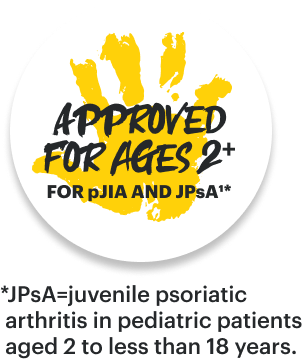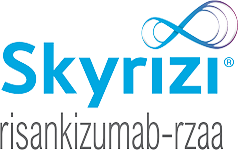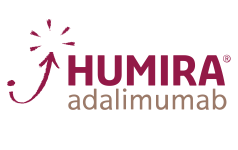WELL-STUDIED
SAFETY
PROFILE

Approved in 8 Indications1-3
11 YEARS
of clinical trial experience2*

26 CLINICAL TRIALS ACROSS 8
INDICATIONS: RA, PsA, AS, nr-axSpA, AD, UC, CD & pJIA1,3

>13,000
patients in global clinical trials across US‑approved indications, including 2+ years in pJIA and pediatrics 12+ years in AD1,3,†
~5 YEARS
of real-world experience1

OVER 267,000
patients prescribed globally across indications since 20231,3‡

>37,800
patient-years of exposure in clinical trials3
*Clinical experience encompasses the time from first RINVOQ patient dosed in RA clinical trial to present.
†pJIA: in adults and pediatric TNFi-IR patients +2 years with active polyarticular juvenile idiopathic arthritis; AD: in adults and pediatric patients 12 years of age and older with refractory, moderate to severe atopic dermatitis whose disease is not adequately controlled with other systemic drug products, including biologics, or when use of those therapies is inadvisable.1
‡Based on prescription data with RINVOQ in patients with RA, PsA, nr-axSpA, AS, AD, UC, or CD as of September 2023.4
AD=atopic dermatitis; AS=ankylosing spondylitis; CD=Crohn’s disease; IR=intolerance or inadequate response; nr-axSpA=non-radiographic axial spondyloarthritis; pJIA=polyarticular juvenile idiopathic arthritis; PsA=psoriatic arthritis; RA=rheumatoid arthritis; TNFi=tumor necrosis factor inhibitor; UC=ulcerative colitis.
Please see Important Safety Information, including BOXED WARNING on Serious Infections, Mortality, Malignancies, Major Adverse Cardiovascular Events, and Thrombosis, below.
Long-Term Safety Data Across Indications5
<<Swipe table to see more
| RHEUMATOLOGY | DERMATOLOGY | GASTROENTEROLOGY | ||||||||
|---|---|---|---|---|---|---|---|---|---|---|
| RA | PsA | AS | nr-axSpA | AD | UC | CD | ||||
| TEAE OF SPECIAL INTERESTa (E/100 PY unless otherwise noted) |
RINVOQ 15 mg | RINVOQ 15 mg | RINVOQ 30 mg | RINVOQ 15 mg | RINVOQ 30 mg | RINVOQ 15 mg | RINVOQ 30 mg | |||
| (N=3209, PY=11,661.5) | (N=907, PY=2823.7) | (N=596, PY=1022.2) | (N=286, PY=388.4) | (N=1337, PY=3823.0) | (N=1346, PY=4076.9) | (N=285, PY=622.7) | (N=291, PY=721.9) | (N=221, PY=329.5) | (N=760, PY=1371.2) | |
| INFECTIONS | ||||||||||
| Serious infection | 3.6 | 3.3 | 2.4 | 1.3 | 2.2 | 2.6 | 2.9 | 4.4 | 3.6 | 6.7 |
| Opportunistic infection (excluding TB and herpes zoster) |
0.3 | 0.4 | 0.2 | 0.3 | 1.7 | 2.2 | 0.3 | 0.6 | 0.6 | 0.4 |
| Active TB | <0.1 | 0 | 0 | 0 | <0.1 | <0.1 | 0 | 0 | 0 | <0.1 |
| Herpes zoster | 3.2 | 3.1 | 3.1 | 2.6 | 3.1 | 5.5 | 4.3 | 6.6 | 2.7 | 5.0 |
| MALIGNANCYb | ||||||||||
| Malignancy (excluding NMSC) | 0.7 | 0.7 | 0.2 | 0.3 | 0.3 | 0.4 | 0.6 | 0.6 | 0.6 | 0.9 |
| Lymphoma | <0.1 | 0.1c | <0.1c | 0.3 | <0.1 | <0.1 | 0 | 0 | 0 | 0.1 |
| NMSC | 0.4 | 0.7 | 0.3 | 0.3 | 0.4 | 0.3 | 0 | 1.0 | 0 | 0.6 |
| CARDIOVASCULAR EVENTSb | ||||||||||
| Adjudicated MACEd | 0.3 | 0.4 | 0.2 | 0.5 | 0.2 | <0.1 | 0 | 0.4 | 0 | 0.1 |
| Adjudicated VTEe | 0.4 | 0.2 | 0.3 | 0.8 | 0.1 | 0.1 | 0.5 | 0.6 | 0 | 0.3 |
| GASTROENTEROLOGICAL EVENTSb | ||||||||||
| Adjudicated gastrointestinal perforations | <0.1 | <0.1 | 0 | 0 | 0 | <0.1 | 0 | 0 | 0.9 | 0.5 |
Adverse reaction rates observed in clinical trials may not fully characterize the risks of RINVOQ. Certain adverse events may require longer observation periods and longer-term patient exposure to ascertain risk.
RINVOQ is taken once daily.
Safety Considerations
Consider the Benefits and Risks for the Individual Patient Prior to Initiating Therapy with RINVOQ
Learn more about RINVOQ safety in specific conditions
Visit the disease state of interest for details
Safety Profile in
RHEUMATOLOGY
Safety Profile in
DERMATOLOGY
Safety Profile in



